Check Your Inboxes! My Newsletter Insights Is Out!
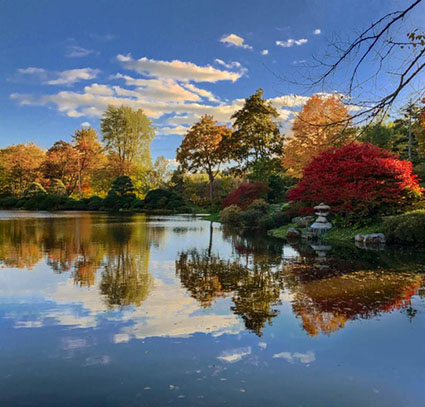
My newsletter Insights is out!
This issue features valuable techniques for making selections in Photoshop easy.
Sign up for my free newsletter here.

My newsletter Insights is out!
This issue features valuable techniques for making selections in Photoshop easy.
Sign up for my free newsletter here.
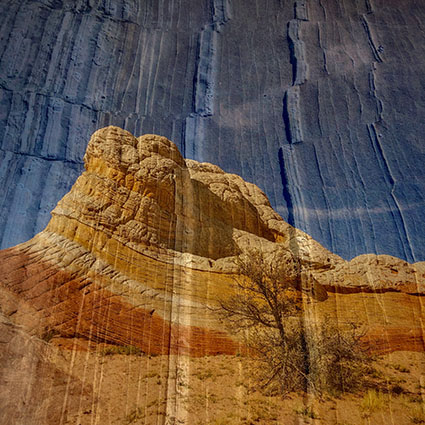
You can refine any mask in Photoshop with a brush. How? Choose any Brush tool and paint on it. The Brush, Healing Brush, Clone Stamp, Eraser, Gradient, Blur, Smudge, Dodge and Burn tools all have their uses. Whether simple or complex, layer masks are just black and white images; you can do anything to a mask that you can do to a black and white image.
It’s important to remember this because you might not realized just how much you can refine a selection or mask. Sometimes tools like Quick Selection do an amazingly fast job of selecting specific image areas, but their results can be improved further with a brush. Many times the sophisticated selections made with tools like Select By Color Range (which will allow you to quickly select Shadows, Highlights, or single colors like Red, etc) end up selecting too many areas and you may want to remove some of those areas from the selected regions in a mask. Painting over those areas with a black brush is one way to do this. (By contrast painting over areas with white will remove any gray values and let the effect of a layer pass through unimpeded.) While there are many brushes you can refine them with, more often than not you’ll find yourself using a simple soft-edged brush to paint black and/or white at varying opacities. It’s a simple but powerful technique, making it extraordinarily useful.
There are many times you’ll want to manually refine a mask with a brush.
Here are a few examples.
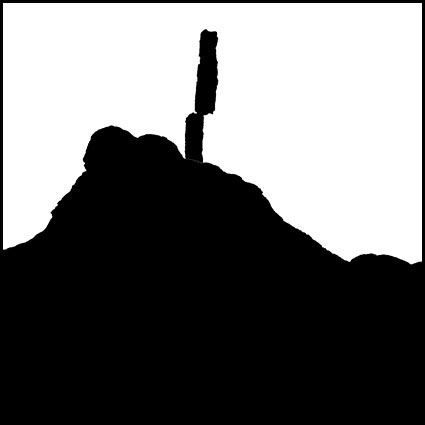
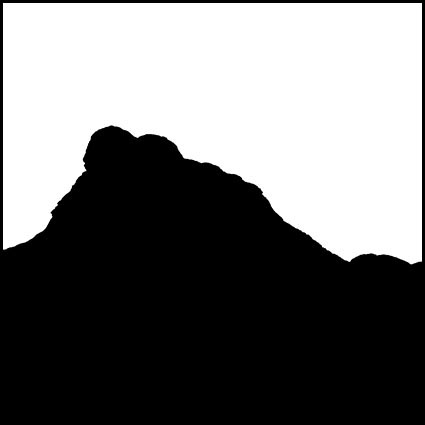
The edge of a contour made with the Quick Selection tool can be refined.
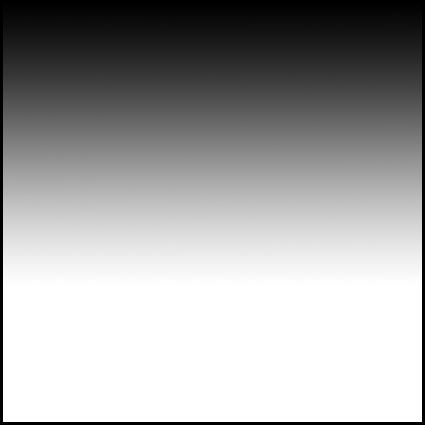
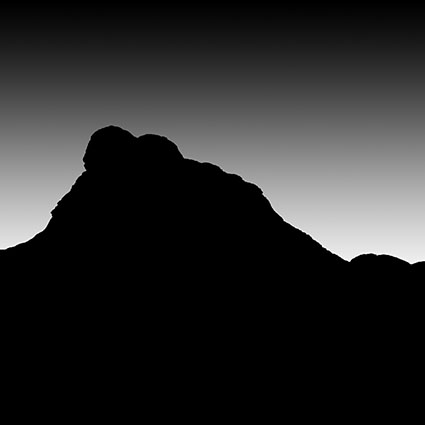
A gradient can be removed from an area.
Here a gradient only affects the sky but not the mountain.
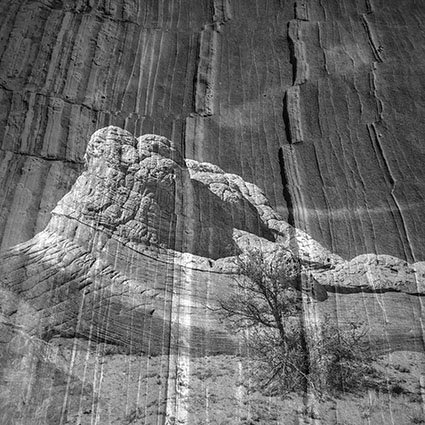
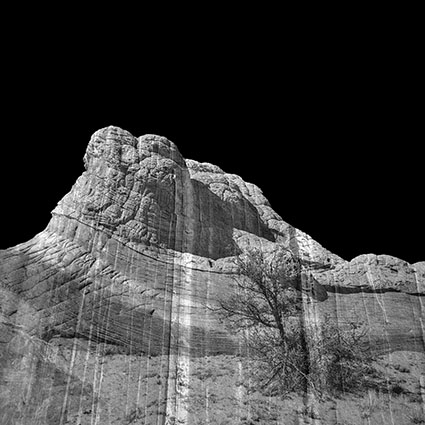
Specific areas of a luminance mask can be removed.
Only the highlights of the lower portion of this image are affected.
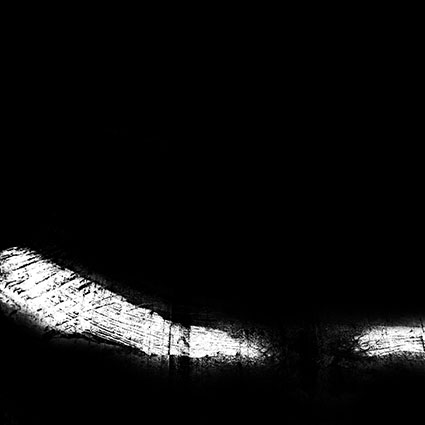
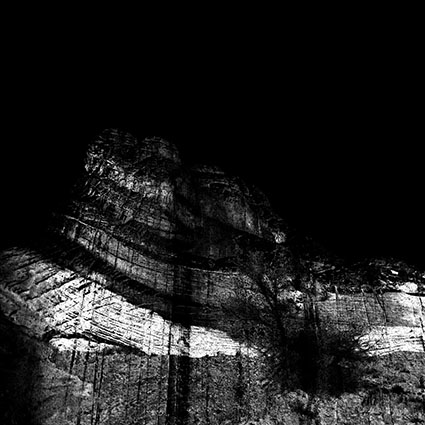
Specific areas of a selection made with Select By Color range can be removed.
One orange area is removed from the selection of other orange areas.
Read more about masking here.
View more in my DVD Drawing With Light.
Learn more in my digital photography and digital printing workshops.
Almost anything will become easier to select if you adjust it first. Photoshop uses color contrast to make many selections. So, if you increase the contrast in an image you make it easier for Photoshop to make those selections.
Using Photoshop’s adjustment layers you can temporarily increase contrast far beyond what you normally would. Be aggressive. Don’t worry about making the image look good; focus instead on making it easier to select the area you want to affect. After the selection is made, simply delete the adjustment layer and continue adjusting the image to improve its appearance.
There are three elements of color and so three types of contrast to choose from – luminosity, hue, and saturation. Which type of contrast you choose depends on what you want to select.
To increase luminosity contrast, choose Curves.
To increase saturation contrast, choose Hue/Saturation and/or Vibrance.
To increase hue contrast, choose Levels to neutralize a color cast and possibly use Hue/Saturation to increase saturation.
Temporary adjustments in Photoshop can make a majority of selections and masks easier to make.
Before
After Neutralizing Color
Mask
Before
After Increasing Luminosity Contrast
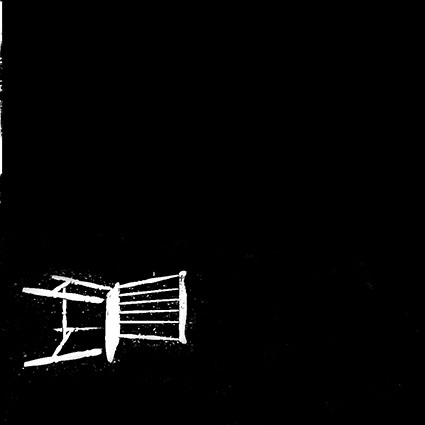
Mask
Before
After Increasing Saturation
Mask
Read more about Selections & Masks.
Learn more in my digital photography and digital printing workshops.
Image adjusted selectively with a gradient
Warm exposure
Cool exposure
Two exposures blended with a gradient mask
Smooth transitions. They’re the essence of continuous tone images. In most cases, you want to preserve them. On occasion, you want to modify them. Sometimes, you want to create them.
While gradients can be used as image layers, they are more frequently used as layer masks. Gradient masks can be used in two central ways, ways that differ from one another significantly. First, gradient masks can be used to selectively reduce the effects of any correction made as an adjustment layer. Second, gradient masks can be used to selectively reduce the opacity of any image layer.
Digital correction with gradient mask techniques replace and surpass using traditional graduated filters. Not only can you make more precise corrections digitally, with gradients you can control the placement of the gradient and transitions within it more precisely. The gradient is uncoupled from the exposure and is indefinitely and infinitely modifiable.
You can do much, much more with gradients. Here are a few of the things you can accomplish using gradient masks.
Transition between stronger and weaker settings of a correction – enhance contrast and color balance selectively, reduce fall off, neutral density filtration, color filtration, add or remove vignetting, etc.
Transition between dark and light exposures – extending dynamic range.
Apply filtration selectively – sharpening, blurring, noise, etc.
Transition between exposures with different points of focus – increasing depth of field.
Transition between adjacent exposures of the same subject – increasing format.
Transition between more saturated and less saturated renditions of an image – accentuating atmospheric perspective.
Transition between the same image with two different white point settings – accentuating or creating the appearance of mixed light sources.
Believe it or not, this is only the beginning of the possibilities gradients offer. Mastering gradients is an essential digital skill.
Although gradients can be extremely complex and can yield extremely sophisticated results, once the basic principle behind them is firmly grasped, they are actually quite simple to create and use.
Gradients are easy to create. You’ll find the Gradient tool (essentially a brush) midway down the Toolbar, below the Eraser and above the Blur tool. With the Gradient tool active click hold and drag a vector across an image, either on a layer mask or less frequently on a new blank layer. A gradient will be created between the start (where you click first) and endpoints (where you drag to). The start and endpoints may be placed anywhere on the canvas. Gradients can be drawn for any length at any angle. The shorter the distance between the two points, the tighter the gradient will be with more abrupt tonal transitions. The longer the distance between the points the softer the gradient will be with smoother tonal transitions. Favor longer gradients with smoother transitions. They can always be tightened and repositioned by adjusting contrast. (Reducing contrast will not produce the opposite effect; it will posterize the gradient.) There may be times when you want to place a start or endpoint outside the border of an image. You can do this by expanding the window around the image. Click and drag on the lower right-hand corner of the window. Gray will be seen surrounding the image but inside the window. A start point, endpoint, or both may be placed anywhere within the window.
Linear gradient
Reflected gradient
Radial gradient
Star gradient
Angle gradient
There are five types of gradients to choose from. Two, Angle and Diamond are of limited use. Three, Linear, Radial, and Reflected are very useful. Linear uses the start and endpoints to define a gradient along a line. Radial uses the start and endpoints to define the radius of a circle. Reflected uses the start and endpoints to define the center (foreground color) and outsides (background color).
Of the sixty-six gradient presets you can choose from, the first two serve most purposes – Foreground to Background and Foreground to Transparent. (Most people can pretty much forget about the other sixty-four presets.) Classically, black and white or shades of gray are most frequently used.
Curves gives you more control
Gradients can be extraordinarily flexible. You can alter the characteristics of a gradient by checking the Edit button under the gradient Options palette. If you don’t get precisely the effect you’re looking for, you can try again. Or, if you’re fine-tuning a monochromatic gradient there’s an easier way. After creating a gradient, slightly longer than you think you need, apply a Curves adjustment to the gradient (Image > Adjustments > Curves). Move the midtones; shift the midpoint. Move the highlights left and/or shadows right; shift the endpoints – quickening the transitions in between. Move the white point down and/or the black point up; change the endpoints to gray. Move the white point down to the black point and the black point up to the white point; invert the gradient. That’s control!
Linear and Reflected gradients combined
You can combine multiple gradients with one another in a variety of ways. Here are two. One, start with one gradient and use the Foreground to Transparent option to add a second. Two, start with one gradient and change the Gradient Tool’s blend mode to Darken or Lighten to add a second. The two methods sometimes yield different results.
Blend modes can be used to modify how a gradient interacts with the image it is drawn on in a variety of ways. For the most control, don’t use the blend mode with the brush; instead, draw the gradient on a separate layer and use the blend mode of the layer to achieve the same effect with more flexibility and control.
You can reposition any gradient using the Move tool. Moving a gradient mask on an adjustment layer presents few problems. You can easily tell if you are working on the image or the mask – its icon will be highlighted. Because and image layer and its mask are linked, to move a mask separately you must first unlink the two by checking off the link icon between them and then targeting the mask to move it separately. It’s likely you will want to relink the two when you are done.
Gradients can be transformed substantially (Edit > Free Transform).
Gradients can be created within active selections to affect only selected areas.
Some gradients suffer from banding. To reduce the effects of banding, add a small amount of noise (Filter > Noise > Add Noise); this will often break up the effect of banding. Be careful not to overdo it or you’ll simply trade one distracting artifact (lines) for another (dots).
But wait, there’s more! Here are three more ways to create extremely useful gradients.
Use a soft-edged brush to create a gradient
One, use a soft-edged brush; the feathered edge automatically creates a gradient.
Two, make a selection, then make an adjustment layer, double click on the mask to activate it’s properties, and use the Feather slider. I don’t like automatically feathering selections. I prefer this method over automatically feathering selections: you get a better preview; you get more precision; and you can modify the gradient by reactivating a masks’ properties.
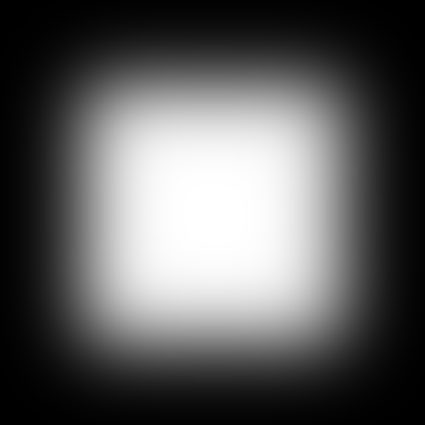
Blur a shape to create a gradient
Three, blur a hard-edged shape and you can create a gradient. By the same token, if a gradient does not have sufficiently smooth transitions it may be blurred, in whole or in part; watch for posterization if you do this.
Remember, masks are black and white images. Anything you can do to a Grayscale image you can do to a mask – adjust its contrast, filter it, transform it, Liquify it, clone it, paint it, etc.
Learning to make good gradient masks is an indispensable skill for adjusting digital images. Their power and versatility are simply unrivaled.
Read more about Selections & Masks.
Learn more in my digital photography and digital printing workshops.
There are at least two good reasons to become more familiar with Photoshop’s key commands related to masking. First, while many of these functions can be accessed through menu items, not all of them can; these features are essentially hidden to users who don’t know the key commands. Second, key commands that make masking and selections easier and faster.
Here’s a list of the most important Photoshop key commands related to masking.
Option click displays a mask in black and white.
Shift click disables a mask.
Option Shift click displays a mask in red at 50% opacity.
Double click on a mask displays options for changing the color and opacity of mask.
Command click loads a mask as a selection.
Shift Command I click loads an inverted selection.
Shift Command click adds to an existing selection. (gradients add at 50% then 10% increments)
Drag and drop to move a mask from one layer to another.
Option drag and drop to copy a mask from one layer to another.
Delete fills a mask with the Background color.
Option Delete fills with the Foreground color.
Control click on a mask to bring up a contextual menu of options …
Disable Layer Mask
Delete Layer Mask
Apply Layer Mask
Add Layer Mask to Selection
Subtract Layer Mask From Selection
Intersect Layer Mask With Selection
Layer Mask Options …
As masks are often painted, brush key command are useful too.
Numbers change brush opacity. (1=10%, 2=20%, 3=30%, etc)
X to reverses foreground and background colors.
[ makes a brush smaller.
] makes a brush larger.
Shift [ makes a brush softer.
Shift ] makes a brush harder.
Read more about Selections & Masks.
Learn more in my digital photography and digital printing workshops.
.
In this Photoshop Quick Tip I show when and how I feather selections for maximum control.
Read more about Selections & Masks.
Learn more in my digital photography and digital printing workshops.
Deke McClelland – Photoshop CS5 Refine Edge
Colin Smith – Photoshop CS5 Cutout and Refine Edge
Jan Kabili – Photoshop CS5 Improved Selecting & Masking
Terry White – Photoshop CS5 Edge Detection / Selecting Hair
Learn more about Photoshop and Lightroom in my DVDs and Workshops.
Masking Basics in CS5
Masking Magic
Learn more about Photoshop and Lightroom in my DVDs and Workshops.
Uncover the hidden potential in all of your images with the art of selective adjustment.
Here’s a short excerpt from my DVD.
Learn more in my DVD Drawing With Light.
Learn more in my Fine Art Digital Printing workshops.